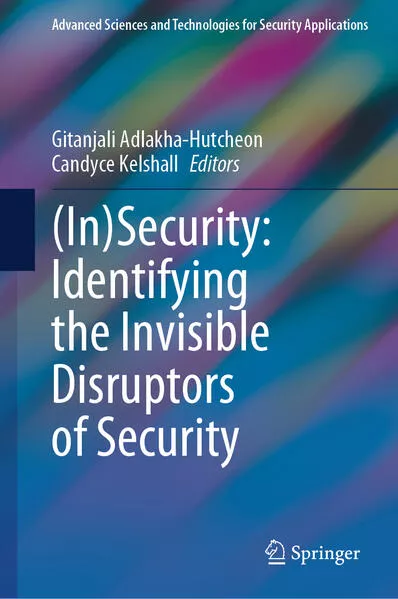
- Publikationen ca: 2
- Fragen & Antworten
Gitanjali / Kelshall Adlakha-Hutcheon
Gitanjali Adlakha-Hutcheon is a Scientist in the Department of National Defence, and The University of British Columbia in Canada. Dr. Adlakha-Hutcheon holds several advances degrees in multiple disciplines: a BSc in Chemistry, Botany and Zoology (gold medallist Delhi University); an MSc in Biochemistry and Microbiology from India; and a PhD in Pharmacology & Therapeutics from the University of British Columbia in Canada. She is also doubly certified in Strategic Foresight. Gitanjali held the positions of the A/Chief Scientist of the Centre for Security Science and Central Offices at the Defence Research and Development Canada (DRDC) and for DRDC's Health Sciences domain until recently. She has extensive experience working with the Canadian Armed Forces, NATO, and other international fora on assessing disruptions, horizon scanning, technology watch, emerging and disruptive technologies, operational research, wargaming, and strategic foresight. She has conducted research on disruptions for close to two decades, within, and for Canada at international fora including NATO. Her research focuses on disruptions, how to identify them, assess and plan for them to enhance resiliency. A highlight of Gitanjali’s contributions to the field is the book Disruption, Ideation and Innovation for Defence and Security (ISBN 978-3-031-06635-1) that she co-edited. She also has hands on experience in developing policies in areas as diverse as Biotechnology and Greening government operations. Gitanjali is an internationally recognized speaker and a well published author. She has delivered over 150 presentations at various conferences in the field of foresight and disruptions. Dr. G Adlakha-Hutcheon is the Chair of the Five eyes Technology Foresight Network for research and development on security.
Candyce Kelshall has over 25 years of experience working in the intelligence space in respect of designing, conceptualizing, and creating curriculum for the professional development and enhancement of intelligence analytic, desk, case, and field officers. She has written fusion center doctrine and conceptualized standing operating orders for several agencies based across the Commonwealth and has trained officers in more than 15 different countries. In addition, she has written several textbooks on Structured Analytic Techniques for national security.
Candyce is the current President of the Canadian Association for Security and Intelligence Studies (CASIS) Vancouver, the Founder/Director of the Canadian Centre for Identity-Based Research (CCIBC), and Editor-in-Chief of the Journal of Intelligence, Conflict, and Warfare (JICW) and affiliated to The University of Buckingham, Buckingham, United Kingdom. She is the Vice Chair of the Canadian Intelligence Network and is an instructor at the Justice Institute of British Columbia (JIBC) where she delivers Advanced Structured Analytic Techniques and sits on the Intelligence Analysis and Tactical Criminal Analysis Committee. She has previously taught forensic technology, artificial intelligence, machine learning, new models and approaches for dealing with crime, and conceptualizing the nature and character of contemporary conflict within society. She also lectures at the University of Buckingham in the United Kingdom where she delivers courses on intelligence psychology, cyber terrorism and intelligence failures. As an instructor with University of Ottawa’s Professional Development Institute, Candyce delivers micro-credential courses on Open-Source Intelligence, Mis and Dis information, Intelligence analysis and Structured Analytical Techniques. She is a member of the Oxford Intelligence Group, and Yale School of Medicine’s Virtual IPE Committee on Security. She has also collaborated with the Network Contagion Research Institute and Simon Fraser University’s Big Data Hub.
(In)Security: Identifying the Invisible Disruptors of Security
What does it take to disrupt security? How does one disrupt the invisibility of insecurity? How does one make the invisible factors that define and impact security visible?For a start, by giving voice to the unheard and the marginalized, engaging non-traditional understandings of security that might bring to light the cracks in our current security infrastructure and expose the insecurities that are hidden in plain sight.
(In)Security: Identifying the Invisible Disruptors of Security
What does it take to disrupt security? How does one disrupt the invisibility of insecurity? How does one make the invisible factors that define and impact security visible?For a start, by giving voice to the unheard and the marginalized, engaging non-traditional understandings of security that might bring to light the cracks in our current security infrastructure and expose the insecurities that are hidden in plain sight.

